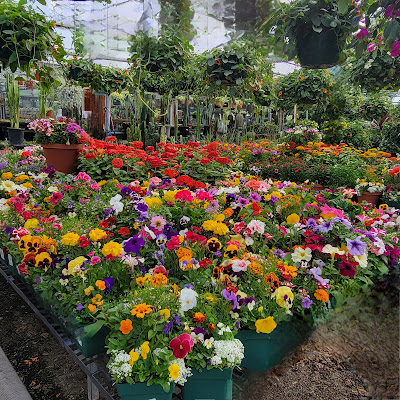When it comes to adding distinctive color into the garden for summer, flowering annuals are the perfect choice. Even the smallest of courtyards or balconies can find room for a hanging basket, a window box or some mixed containers filled with annuals.
Annuals are defined as plants which complete their life cycle in one season. Annuals will sprout, grow, bloom and die in a single season. To ensure these flowers remain in your garden or on the patio, it is necessary to replant them each spring or annually. This contrasts with perennials, which are plants that return year after year.
Beautiful annuals all season long are a result of consistent care, including proper watering, feeding, deadheading, and choosing the right plants for the right location.
There are annuals that do well in full sun, partial shade and shade so it’s important to choose varieties that are well-suited for the sunlight your garden receives. Additionally, giving each plant enough space to breathe by following proper spacing guidelines helps prevent overcrowding, reducing disease pressure and encouraging fuller, more robust flowering.
Continuous Color All Season – One of the great things about annuals is that they are usually colorful for a longer time than perennial plants that return year after year. Annual flowers tend to bloom continuously from spring until fall.
Lots of Colors and Sizes – Annual plants come in a huge variety of flower and leaf colors. They also come in different heights, from trailing to towering. So, there is bound to be just the right annual for any place on a balcony, deck or in a garden.
Geraniums, petunias, marigolds, zinnias are common annuals that will produce uncommon colors through our gardening season. Once you’ve made your decisions and chosen the annuals you want for your landscape, it’s time to plant.
Choose the right soil to plant your new annuals in. If you're planting in a container, use a quality potting soil.
High grade potting soils are light and airy, do not contain clay or garden soil or water retention crystals.
If you're planting in a garden bed, take time to amend your soil with compost and peat moss. Your plants will root out better and thrive when the weather gets warmer.
When taking your plants out of their plastic containers, loosen up the roots so they’ll spread out. Place them so the base of the plant is even with the soil.
Next, water each plant well. Annuals typically have shallow root systems and need to be checked daily to make sure they don't dry out. This is especially true of hanging baskets.
Once your plants become established, water as needed to keep the soil from drying out. Watering Technique: Be careful to water the soil directly, rather than the foliage, to avoid fungal diseases.
To keep their color going strong, annuals need to be fed on a regular basis. Use what we use to feed our plants. A balanced fertilizer such as ferti-lome 20-20-20 is designed to feed your annuals just what they need to keep them healthy and flowering throughout the season. Fertilize every 12 to 14 days.
Deadheading: Removing spent flowers regularly to encourage more blooms and prevent the plant from going to seed.
When you're looking for plants that will add color to your garden beds or containers, look no further than annuals. Annuals add instant color to your garden and patio and with a little care, these amazing plants will provide color and interest all season long.






















